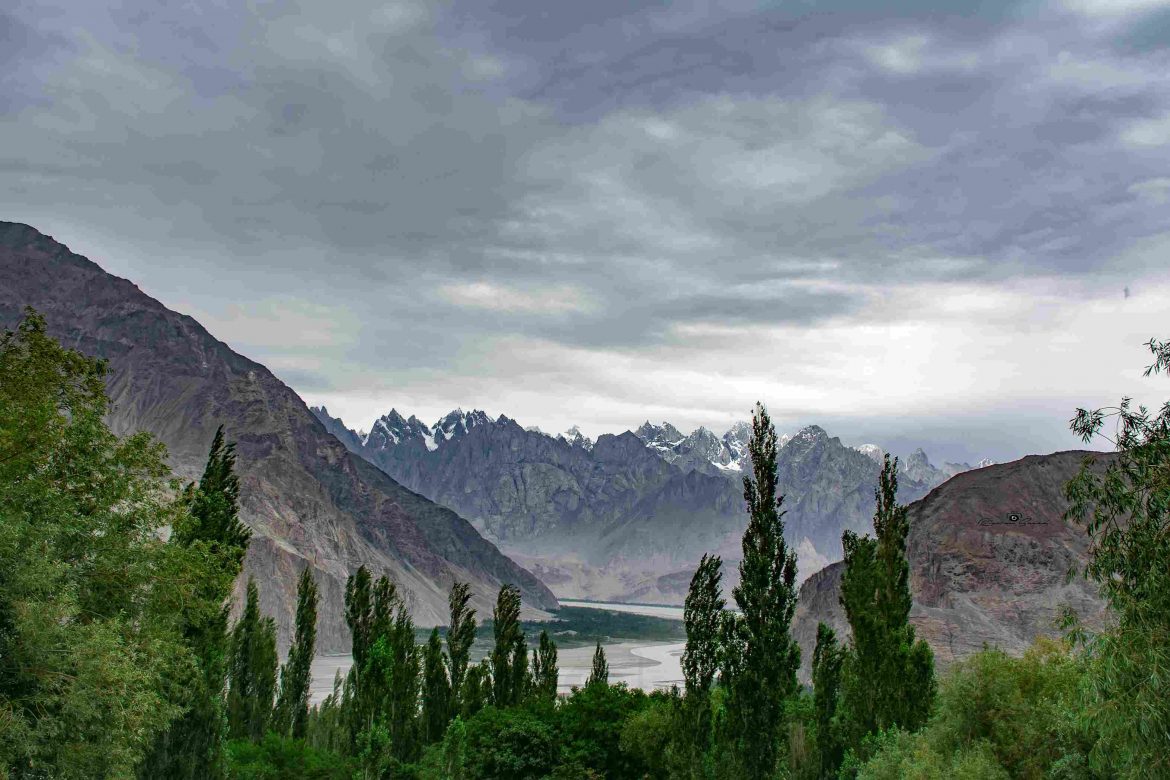Gilgit-Baltistan is a mountainous region located in the northernmost part of Pakistan. It is bordered by Afghanistan, China, and the Indian-administered state of Jammu and Kashmir. The region is known for its spectacular natural beauty, diverse cultural heritage, and historical significance.
Geography:
Gilgit-Baltistan is a land of towering peaks, glaciers, valleys, and rivers. The region is home to some of the world’s highest mountains, including K2, the second-highest peak in the world. The Karakoram, Himalayas, and Hindu Kush mountain ranges converge in Gilgit-Baltistan, making it a hub of mountain tourism. The region is also rich in natural resources, including minerals, gemstones, and forests.

Biodiversity:
Gilgit-Baltistan is a region rich in biodiversity due to its varied topography and climate. The region’s unique geography, ranging from high-altitude mountains to lowland valleys, provides a habitat for a variety of flora and fauna. The region is home to several species of plants, animals, and birds that are endemic to the area.

Gilgit-Baltistan has a rich variety of flora, including medicinal plants, fruit trees, and ornamental plants. The region is home to several species of junipers, including the ancient and rare Chilgoza pine. The region also has vast expanses of alpine meadows and pastures, where wildflowers, grasses, and other plants flourish. Some of the common species of plants found in Gilgit-Baltistan include Himalayan blue poppy, wild rose, tulips, and several species of wild berries.
Gilgit-Baltistan is home to several endangered and rare species of animals, including snow leopards, brown bears, Marco Polo sheep, ibex, and Himalayan musk deer. The region is also home to several species of birds, including the Golden Eagle, Bearded Vulture, and Himalayan Monal. The Indus River, which flows through Gilgit-Baltistan, is home to several species of fish, including trout and mahseer. The region is also home to several species of snakes, including the venomous Russell’s viper.
History:
Gilgit-Baltistan has a long and complex history. It was once part of the ancient Silk Road, a network of trade routes connecting China, Central Asia, and Europe. The region was ruled by various empires, including the Mauryans, the Kushans, native rulers, and the British. After the partition of India in 1947, Gilgit-Baltistan became part of Pakistan. However, its status remained uncertain until 2018 when the government granted the region a provisional provincial status.

Culture:
Gilgit-Baltistan is a melting pot of different cultures and ethnicities. The region is home to several languages, including Shina, Balti, and Brushaski. The people of Gilgit-Baltistan are known for their hospitality, colorful dresses, and traditional music.
The region’s festivals and fairs, such as the Shandur Polo Festival and the Navroz Festival, attract visitors from all over the world. Gilgit-Baltistan is also home to several important religious and historical sites, including the Altit and Baltit forts, which are UNESCO World Heritage sites.

Gilgit-Baltistan is a unique region that has something to offer to everyone. Its spectacular natural beauty, rich cultural heritage, and complex history make it an ideal destination for adventure tourism, cultural tourism, and heritage tourism. The region’s people are warm and welcoming, and its traditional culture is still alive and well. Whether you are a nature lover, history buff, or cultural enthusiast, Gilgit-Baltistan is a place you should not miss.


